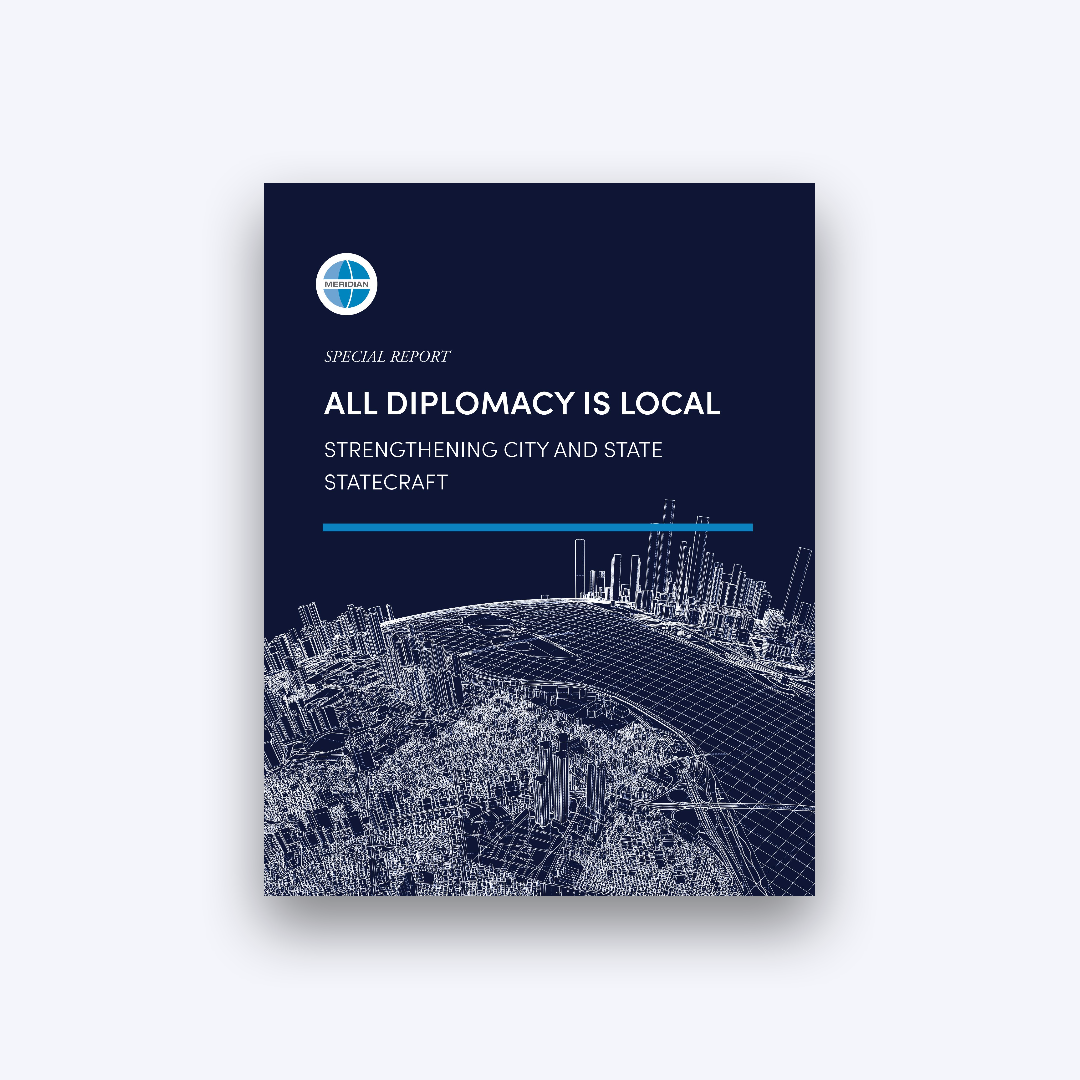Soon after Detroit filed for Chapter 9 Bankruptcy, rumors began to surface about the Detroit Institute of Arts selling off its artwork to raise much needed funds. Then there came reports that developers are “pushing for the city to sell” Belle Isle, a 982-acre island in the Detroit River for $1 billion. Supporters forecast that a privately owned Belle Isle would rival Singapore ‘as an economic miracle’, and that the island could generate ‘billions of dollars in desperately needed economic growth’, and become ‘a social laboratory for the western world’ — “an experiment in small government.” Meanwhile plans are in motion for a new Red Wings hockey arena despite the bankruptcy.
Opinions abound concerning all of Detroit’s options. I spoke with Marian Reich and Karly Wagner of the International Visitors Council of Metropolitan Detroit (IVC Detroit) to gain a better sense of what’s happening on the ground. I wanted to learn more about the local initiatives and community leaders that are driving Detroit’s redevelopment. Their responses and sense of hope were truly heartening. I really got the sense that Detroiters were going to pick up their city and get it going again.
Two Leaders Reshaping Detroit
Marian and Karly cited two leaders, one corporate and one more grassroots, that are helping to reshape Detroit. Both are Michigan natives, and the record attests to their Detroit solidarity.
Dan Gilbert is the founder and chairman of Quicken Loans. He is also the chairman of Rock Ventures which has been busy purchasing properties indowntown Detroit for redevelopment. In 2010, he moved Quicken Loans headquarters to downtown, and through his rebranding efforts, he has successfully attracted other companies to follow suit. Even Chrysler, with its world headquarters in Detroit’s suburbs has opted to open an office downtown. IVC Detroit also plans on moving downtown before the end of this year. Gilbert’s other initiatives include Bizdom, a startup accelerator in Detroit.
Phillip Cooley the co-founder of Slows Bar BQ and O’Connor, a real estate development firm is another young star. He sees Detroit as a city of opportunity and he devotes his time to helping transform it. PonyRide, his latest project, rents studio space to artists and entrepreneurs in a 30,000 square-foot warehouse for $0.10 – $0.20 per square foot including utilities! Another project he’s backed is Roosevelt Park; a large green space and skate park for the city. The letters spelling out Roosevelt Park are even skate able!
Ten Promising Developments
Marian and Karly also provided this list of 10 promising developments to watch in Detroit:
1) Urban Revitalization – There is a coordinated effort on the part of many community stakeholders to revitalize Detroit’s urban center. In fact, many small business are opening up in Detroit (esp. Downtown, Midtown and New Center), and with a $100 million dollar (non-governmental) investment in the new light rail system, there is hope that the city’s turn-around will continue to grow at a rapid pace;
2) Detroit Future City and related initiatives are focused on revitalizing abandoned neighborhoods, creating jobs, and facilitating new city wide development;
3) The Greening of Detroit, Recovery Park, and other innovative organizations are working to expand urban agriculture in Detroit. This provides access to fresh, healthy, affordable foods, reduces pollution, and brings other benefits to the city and its residents;
4) PonyRide, Detroit Creative Corridor Center and other social entrepreneurship incubators have been able to turn Detroit’s foreclosure crisis into an asset by leasing inexpensive work space to socially conscious artists and entrepreneurs who help serve Detroit communities by sharing their creativity, craft, and expertise.
5) Heidelberg Project continues to be a positive development in the city of Detroit as it transforms urban blight and abandoned buildings into a place of hope and inspiration, arts education, and community involvement;
6) Renewed interest in Detroit – Artists, entrepreneurs, international and US tourists, urban explorers, and suburbanites are coming to the city to visit and to live because of its “anything is possible” environment as well as its affordable spaces;
7) Detroit’s fiercely independent spirit ignites grass-roots projects such as the “Mower Gang” – a group of volunteers who tend abandoned spaces in the city, including parks and playgrounds that the city no longer maintains;
8.) Eastern Market and public/private partnerships – Known as the largest historic public market district and operated by the nonprofit Eastern Market Corporation since 2006, Eastern Market serves approx. 40,000 people on Saturdays in summer. With newly renovated spaces, the Market will serve as a catalyst for development in the surrounding neighborhood;
9) Global Detroit/International Institute/Welcome Mat Project – Initiatives to attract immigrants to Detroit to grow the city in terms of economic development, foreign investment, and increase population;
10) Tech in Detroit –Wayne State University, Tech Town, BizDom and other initiatives are turning Detroit into the new Silicon Valley.
Meridian and Detroit
Meridian International Center works with the International Visitors Council of Metropolitan Detroit (IVC Detroit) to coordinate local travel and appointments for the International Visitor Leadership Program. Visitors typically stay in downtown Detroit, adjacent to the Detroit Riverfront, across from the Renaissance Center, which is home to General Motors’ World Headquarters. The hotel is connected to a Detroit’s People Mover station, which provides public transit to several of Detroit’s cultural attractions, including Comerica Park (home to the Detroit Tigers), Campus Martius, the Fox Theater, and Greektown. From the hotel, visitors are often impressed and surprised at the beautiful views of Canada across the Detroit River, which is actually located south of Detroit.
















